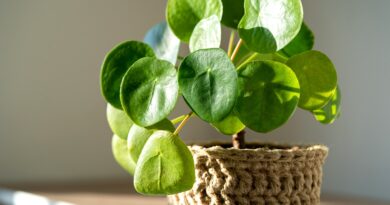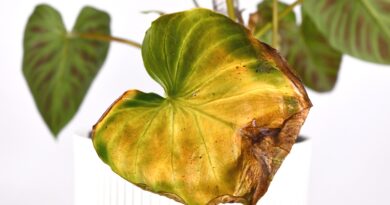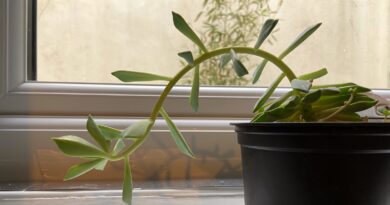8 Common Houseplant Pests and How to Remove Them
Pests are the last thing any houseplant owner wants to deal with. These bugs are harmful to our precious plants and can spread rapidly indoors, invading our living spaces and wreaking havoc.
Luckily, if you act quickly, you can usually stop houseplant pests from doing any long-term damage or, worse, killing the plant. Keeping an eye out for signs of infestation and following the treatment options as quickly as possible will ensure pests never become more than a nuisance in your home.
Keep an eye out for these eight common houseplant pests, with instructions on removing each one.
Spider Mites

Spider mites are among the most common houseplant pests in warm and dry indoor environments. As the name implies, these pests are arachnids (not insects), more closely related to spiders than other bugs on this list.
Spider mites are incredibly tiny. There are also several types, such as the widespread two-spotted spider mite, with colors ranging from green to red and yellow. Since they are tough to spot with the naked eye, you’ll usually notice signs of concern in your plants long before you see any bugs yourself.
As spider mites are sap-sucking pests, you’ll usually notice yellow or brown discoloration on the leaves. They may also have a dusty residue and fine webbing between the stems or wrapped around leaves. In severe cases, your houseplant may stop growing entirely, dropping its existing leaves.
One way to identify spider mites is to shake the leaves onto white paper. If you notice tiny moving dots that stand out, they’re probably spider mites.
As soon as you notice a spider mite problem, isolate the plant to stop the bugs from spreading. For minor infestations, spray the leaves with water to remove bugs and any eggs, repeating the process every few days until all signs of infestation have disappeared.
For a stronger treatment, try insecticidal soap or horticultural oil. Some plants are more sensitive to these treatments than others, so do research and apply carefully once you’ve chosen a treatment.
Since spider mites like warm and dry environments, changing conditions can limit problems and prevent infestations in the future. Move the plant to a slightly cooler room (if it can handle the temperature dip) and increase humidity around it. Also, keep up with watering to stop the soil from drying out completely, limiting stress.
Mealybugs

Thankfully, these bugs are much easier to identify than spider mites thanks to the waxy, cotton-like substance they leave behind. You have a mealybug infestation if you notice anything white and fluffy on your houseplants – particularly if those white and fluffy spots are moving.
Related to scale insects, hundreds of mealybug species are found in indoor and outdoor gardens. They also suck the sap from leaves and stems and lay eggs in any gaps they can find to reproduce. They produce their waxy coating to protect the bugs and their eggs.
Mealybugs also secrete a sticky substance called honeydew that remains on the leaves of your houseplants. If not resolved, this can lead to the development of black sooty mold, negatively impacting overall growth. Honeydew can also attract ants, although this is less common indoors.
Mealybug infestations are important to catch early. If you leave these bugs around for too long, they will become much harder to control. Severe infestations are almost impossible to resolve, meaning you’ll likely need to discard the plant completely.
As soon as you spot signs of mealybugs, take action by isolating the plant and spraying off as many as possible with a strong jet of water. Kill the remaining pests by hand with a cotton swab dipped in isopropyl alcohol. Continue repeating the treatment when you spot new bugs until they are completely gone.
Other treatments like neem oil or insecticidal soap are also effective. Apply carefully according to the instructions on the product to avoid damaging your houseplants. If follow-up treatments don’t remove the mealybugs, it’s best to discard the plant to stop the bugs from spreading around your indoor garden.
Aphids

Thousands of different aphid species spread worldwide, attacking almost every plant in your indoor and outdoor garden. These pear-shaped insects come in many colors and are hard to spot individually but easy to identify in clusters once they start reproducing.
The main concern when it comes to aphids on houseplants is reproduction. Outdoors, their reproduction is influenced by the change in seasons. Indoors, where it remains warm year-round, aphids continually reproduce, spreading far more rapidly between houseplants than they would in your backyard.
Aphid damage is similar to mealybug damage. Along with sucking the sap from the leaves and weakening the plant, these bugs also secrete honeydew that encourages sooty mold. This inhibits photosynthesis, stunting growth, and increasing stress.
Tiny aphids are good at hiding, making them tougher to spot in the initial stages of infestation. Check the undersides of houseplant leaves and gaps between stems to identify potential problems.
Like mealybugs, it’s best to treat an aphid infestation as soon as possible. Isolate the plant if you spot any pear-shaped bugs, prepping for treatment. Also, look out for aphids on any other houseplants to treat them simultaneously in case of spread.
Your first line of defense is a simple spray of water. Aphids attach themselves to the leaves with their piercing mouthparts, and spraying them off rapidly removes their mouthparts from the rest of the body, effectively killing them. Pick off any remaining bugs by hand and squish them between your fingers.
It will take a few rounds of treatment to remove the bugs completely. If you have a plant sensitive to strong jets of water or if the aphids stick around, apply neem oil to suffocate and remove them.
Thrips

Thrips are slightly less common than the previous pests on this list, but they are incredibly damaging once they settle in. Difficult to see with the naked eye, a tiny thrips problem can become huge in weeks if not controlled.
Adult thrips are typically black, with wings that allow them to move from one houseplant to the next quickly. Once they’ve found a spot they’re happy in, they will suck on the sap inside leaves and stems, leaving small patches of discoloration.
The biggest issue with thrips is the eggs hatching into nymphs that continuously feed on the plant. Grown nymphs move into the soil for their next growth stage, infiltrating every part of the plant. Once they develop wings, they fly away to spread eggs to more houseplants.
After hatching, thrips can mature in just a few weeks, rapidly increasing their numbers. The sooner you tackle the problem, the better your chances of saving not only the affected houseplant but all your other houseplants too.
As with any treatment, start by isolating the plant. Trim any leaves that show severe signs of damage, as these won’t recover and are likely storing several eggs. Spray the leaves – particularly the undersides – to remove as many of the bugs as you can. Follow up with insecticidal soap to kill the remaining insects.
There will likely be a few more eggs after the initial treatment and possibly some nymphs in the soil. Keep your plant isolated, reapplying the treatment every few days until you are sure the problem is gone. If the plant still struggles after a few weeks, discard it rather than risk spreading the problem.
Even after you’ve treated the plant, use sticky traps to stop any adults from attacking the plant again. They typically choose plants that are stressed or unhealthy, putting the previously treated houseplant continuously at risk.
Scale Insects

If you notice small bumps collected on the stems and leaves of your houseplants, they’re not growths. Those are probably scale bugs, incredibly damaging pests that feed on plant juices and weaken structures within the stems.
Scale can be armored or unarmored, with the hard shell scales the hardest to treat and remove. They develop a protective covering that gives them a rounded, growth-like look, feeding on the plant and laying eggs underneath this coating.
These bugs are usually brown, so they are sometimes mistaken for strange growths in the stems. However, they may also be creamy white or black. Young scale insects are incredibly tiny and translucent, difficult to spot until they find a spot to latch onto and mature.
The previous treatment options involved spraying loose bugs off the plant before applying removal products. Unfortunately, that won’t work for scale. These bugs latch onto the stems and leaf veins, often protected from strong sprays by their coverings.
Physical removal is the ideal starting point, dislodging the bugs from their hideouts. Your fingernail is the best tool, but if you’re squeamish, you can also use cotton swabs or an old toothbrush. Be careful not to damage the plant when removing scale – just lift the bugs and shake them off.
Once you’ve removed the scale you can see, apply an insecticidal soap or horticultural oil to tackle those you might have missed and to remove any young insects. Keep the plant isolated for a few weeks until the scale problem is gone.
Whiteflies

Although they are more closely related to aphids and mealybugs than actual flies, whitefly perfectly describes the look of these tiny bugs. Whiteflies look like small moths with white wings and sometimes yellow heads that gather around the undersides of leaves and fly off when the plant is disturbed.
Whiteflies develop rapidly, moving from the nymph stage to flying adults within a few weeks. Their rapid reproduction makes these pests one of the most difficult to control. That, combined with their wings that allow them to hop from one plant to another quickly, make whiteflies a severe problem once they settle in.
Houseplants with a whitefly infestation will develop yellowing leaves and a general lack of growth. Heavily infested leaves may drop off the plant one by one, continuing until the bugs are removed. They produce quickly in warm and dry weather, much like spider mites.
Encouraging beneficial insects is one of the best ways to tackle recurring whiteflies. Unfortunately, that’s a little tricky to do indoors, so you’ll need to take matters into your own hands.
Start by spraying off as many bugs and eggs as you can, lifting the leaves to focus the water on the undersides. Follow this up with insecticidal soap or horticultural oil, depending on what products your particular houseplant can handle.
To manage any whiteflies that may still be flying around, use sticky traps. Hang them around your houseplants or stick them into the soil to catch any remaining pests before they can settle on the leaves.
Fungus Gnats

Fungus gnats are certainly one of the most annoying of all the common houseplant pests. These small pests fly around your houseplants, laying eggs in moist soil to reproduce.
Although they aren’t as damaging as some other pests, young larvae can feed on young, tender roots beneath the soil, potentially slowing growth. They can also spread quickly around your home, filling the space and becoming a huge nuisance.
Fungus gnats are attracted to moist soil and often become a problem when your houseplants are overwatered. Adults will lay their eggs in the soil, with larvae hatching within a few days. In about two weeks, new adults emerge from the soil and fly around to other houseplants.
Sticky traps are one of the best ways to catch adult fungus gnats, preventing them from laying eggs in the soil. Unfortunately, if your soil is already infested, you’ll need to target this area for treatment to remove the problem altogether.
Start by allowing the soil to dry out. Since they thrive in moist soil, depriving the gnats of moisture will help limit reproduction. After that, my go-to solution is to simply repot the entire plant, replacing the soil completely to remove any traces of larvae.
If you’d prefer not to repot, you can try applying biological controls like Bacillus thuringiensis subsp. israelensis (Bti) to the soil to kill off the larvae. You may need to apply several rounds of treatment before the larvae are removed completely.
After treatment, watch your watering carefully to avoid attracting fungus gnats to your houseplants again.
Ants

Most of us have experience dealing with ants in our homes or the garden. But for houseplant owners, they can become a particularly troubling issue.
While ants don’t usually feed on houseplants or do much damage, they can use the soil inside your containers as a hideout, laying eggs and reproducing to spread around your home. Ants are never welcomed indoors but are especially problematic when they carve up houseplant soil and cause spatial problems for the roots.
Ants can indicate that you probably have another pest problem to deal with, namely aphids, mealybugs, or any pests that secrete honeydew. The ants feed on this sticky, sweet substance while protecting the other pests, increasing the population of both bugs.
To tackle ants at the source, bait traps are the answer. The ants are attracted to the bait and carry it back to the colony, killing the rest of the ants at the same time. I’ve found it’s best to switch bait types occasionally and place the traps in their typical path.
To remove the ants inside the container, submerge the pot in a bucket of water for around half an hour to drown them. Alternatively, if they’ve made a large home inside the pot, it’s best to repot and replace the soil. Removing disintegrated soil will be better for the health of your plants in the long run.
Final Thoughts
Pest problems are somewhat out of our control as gardeners, but we can take steps to treat and prevent problems to keep our houseplants happy and problem-free.




